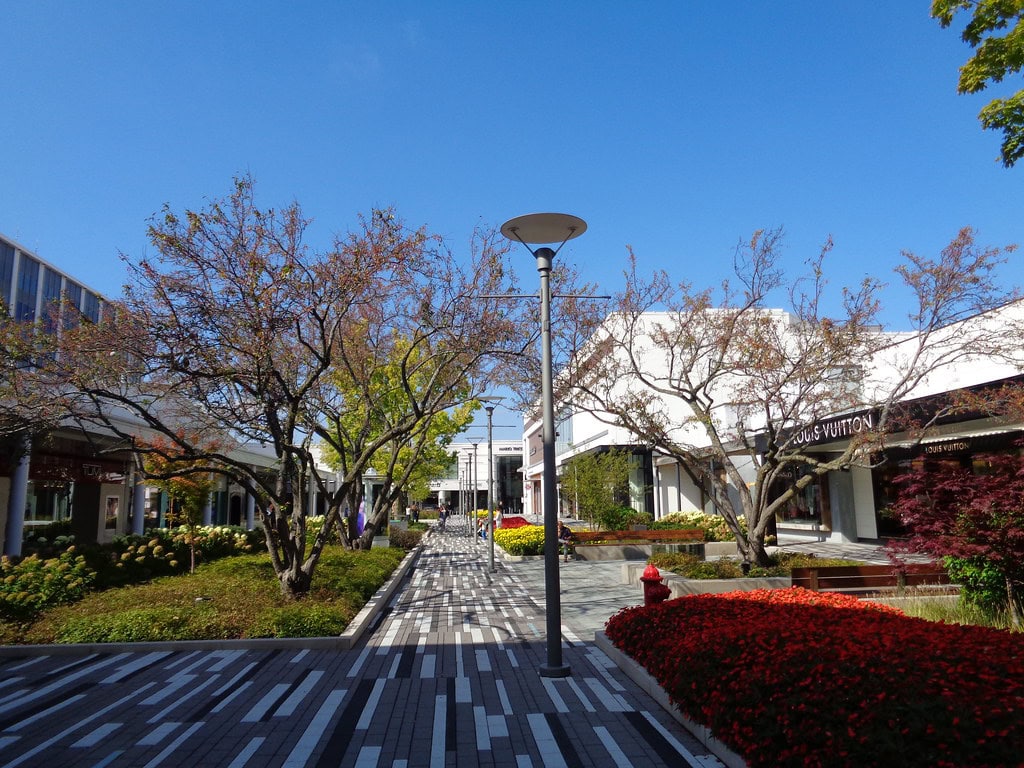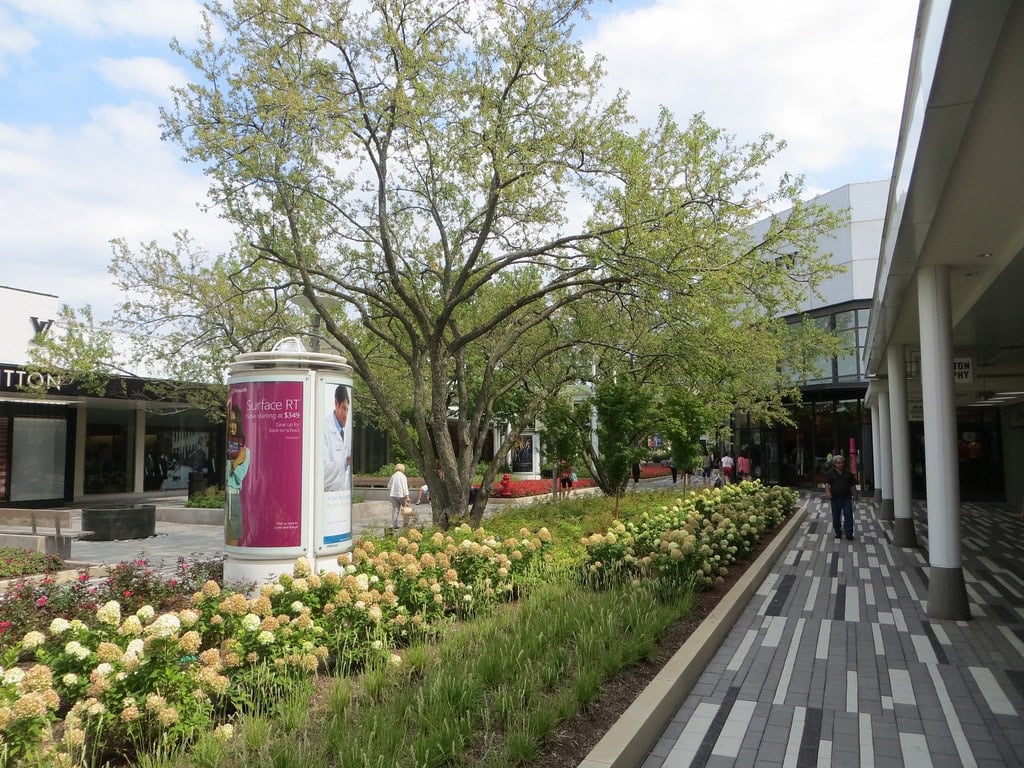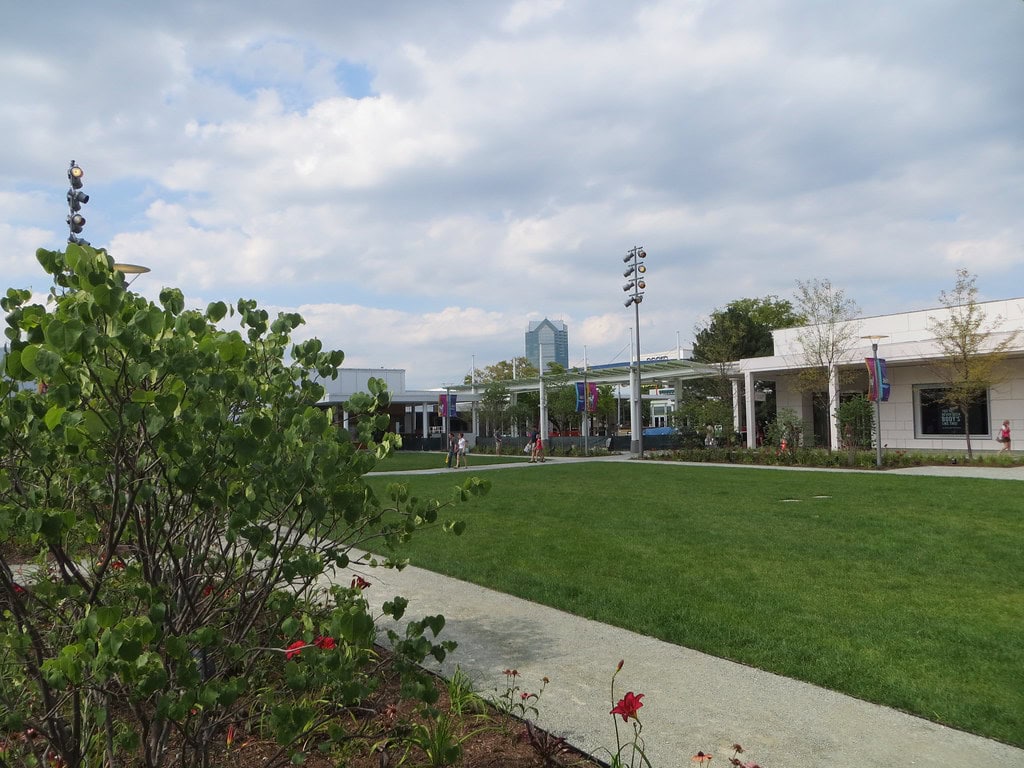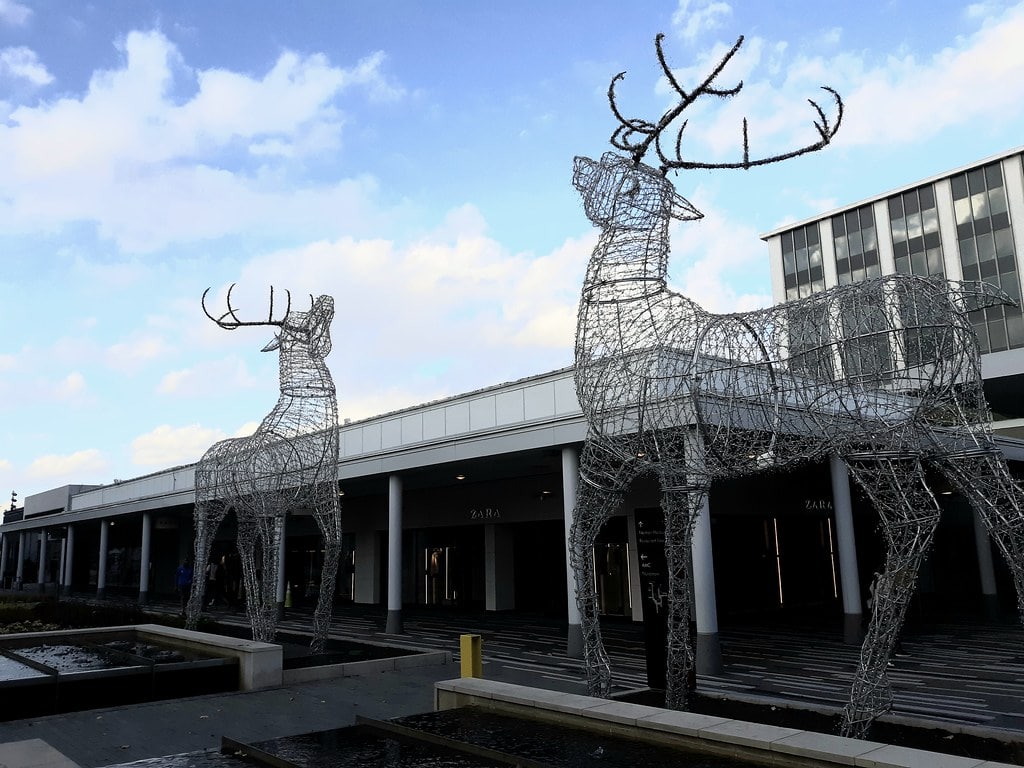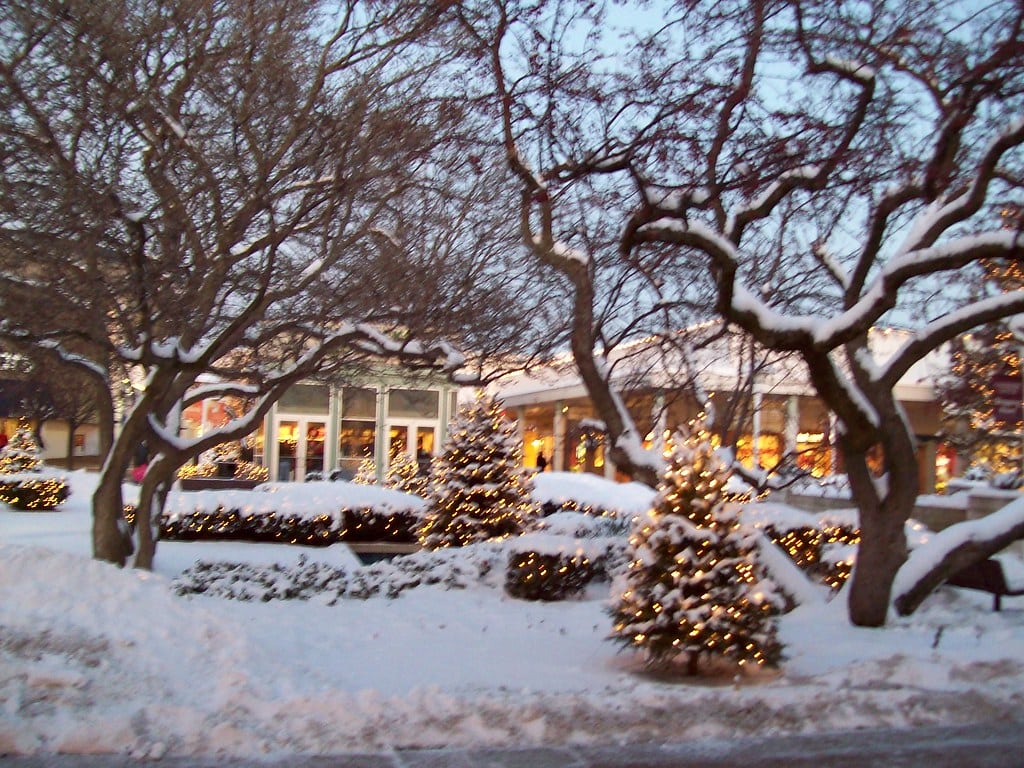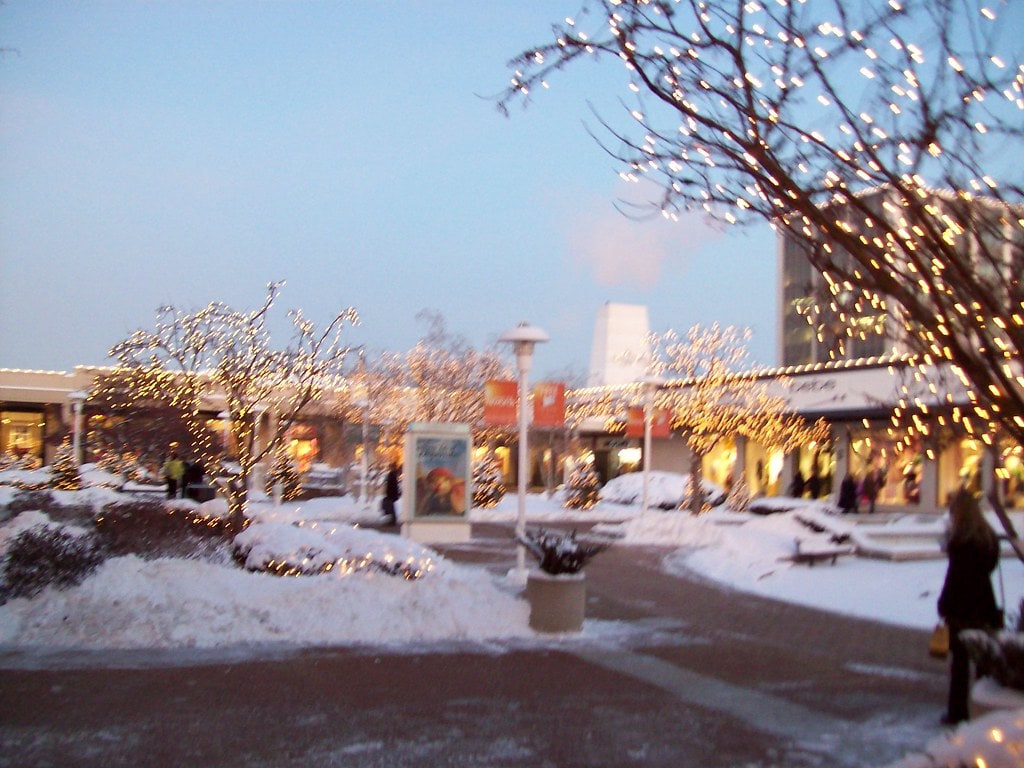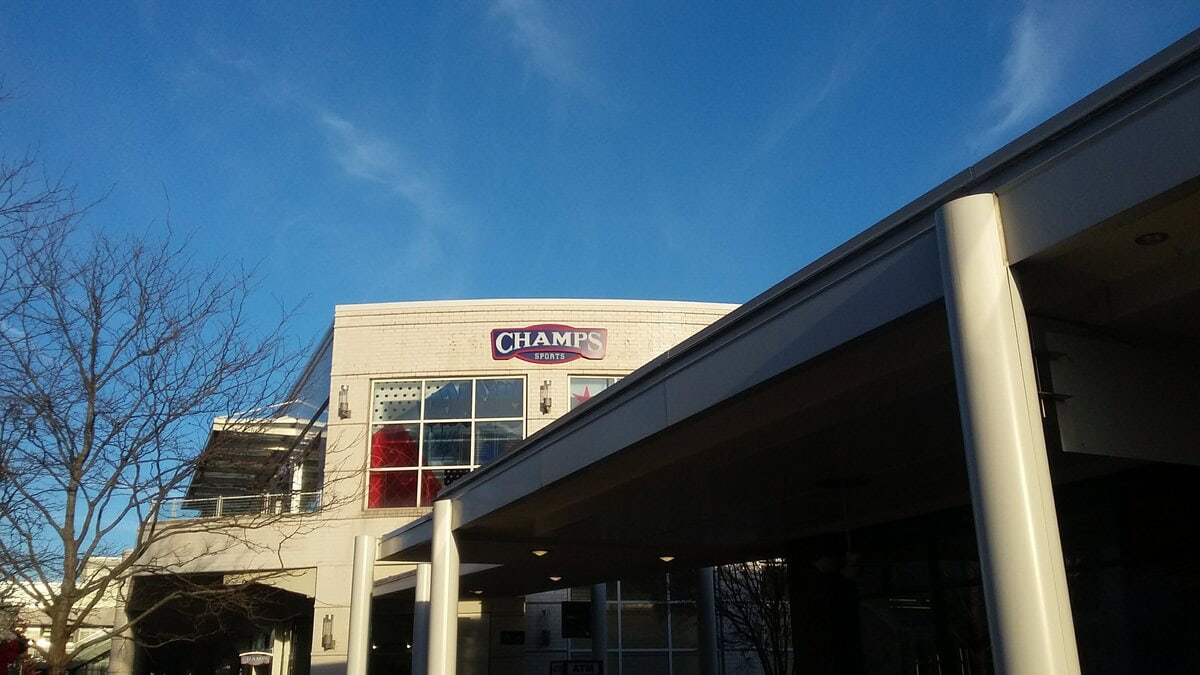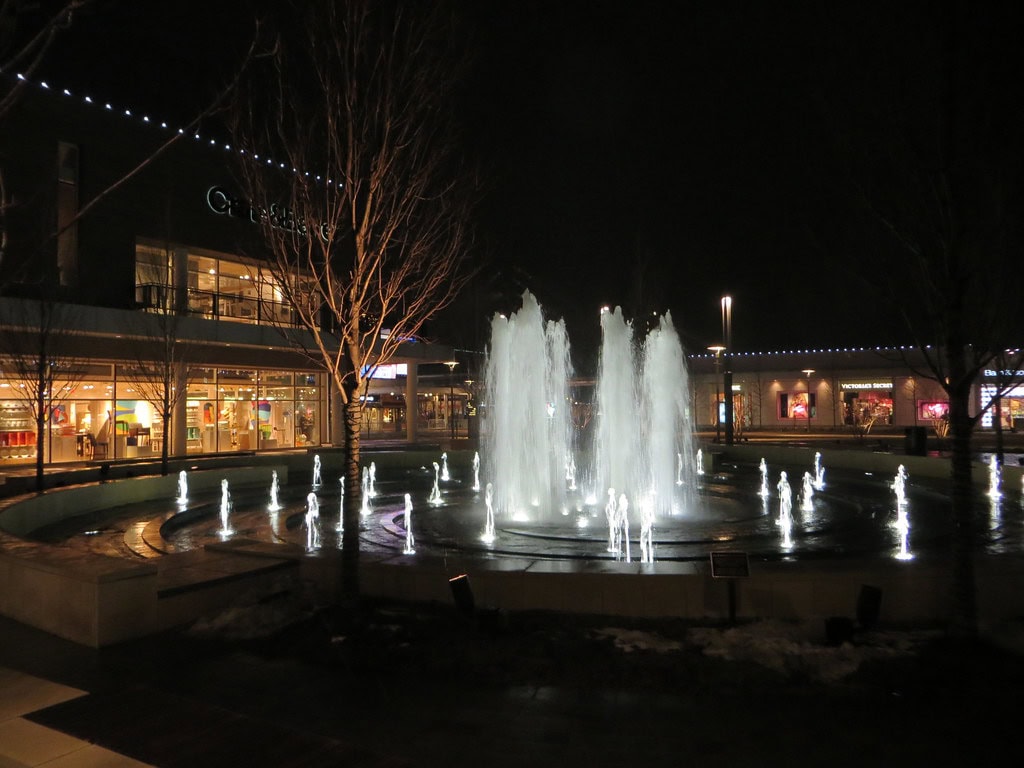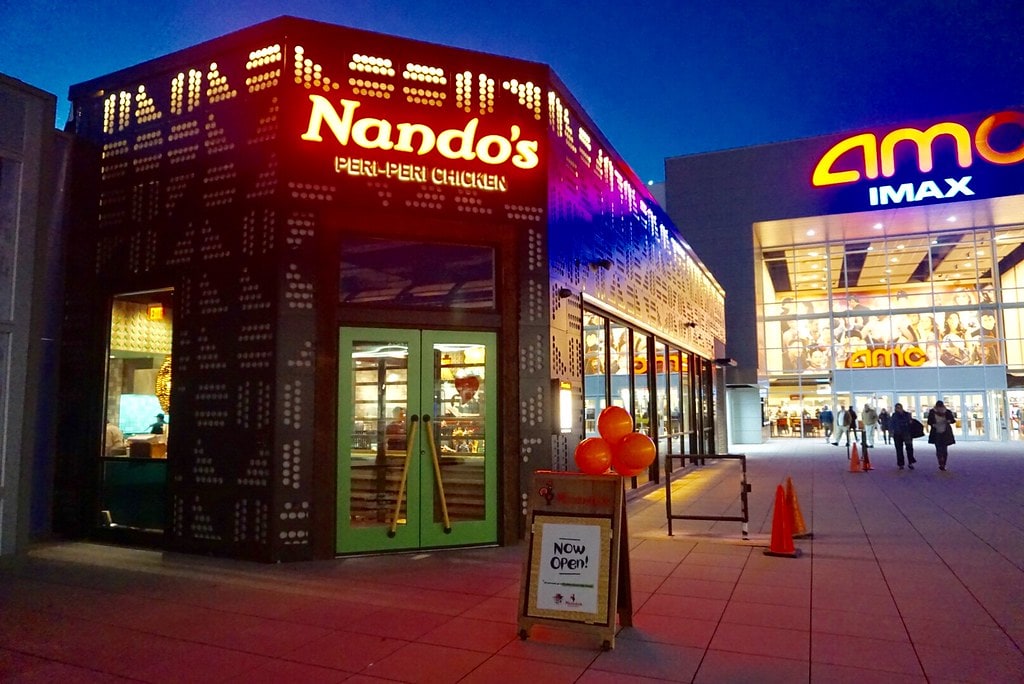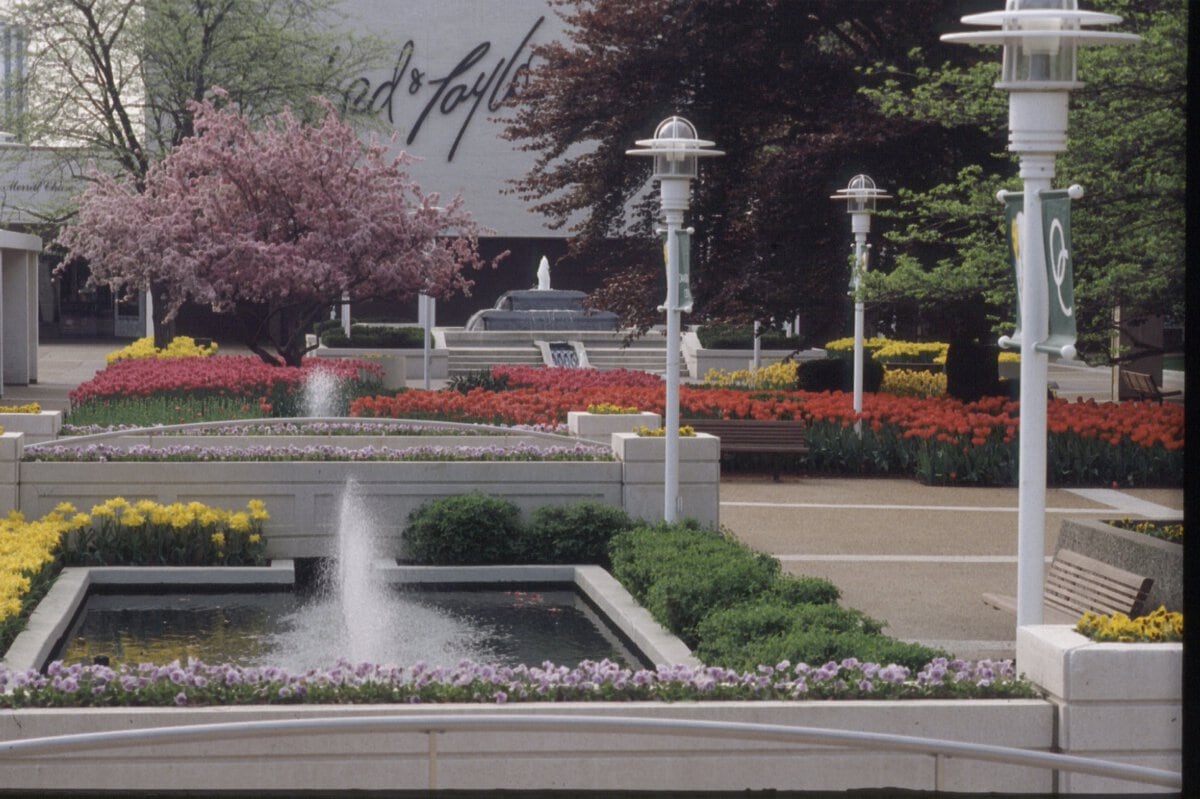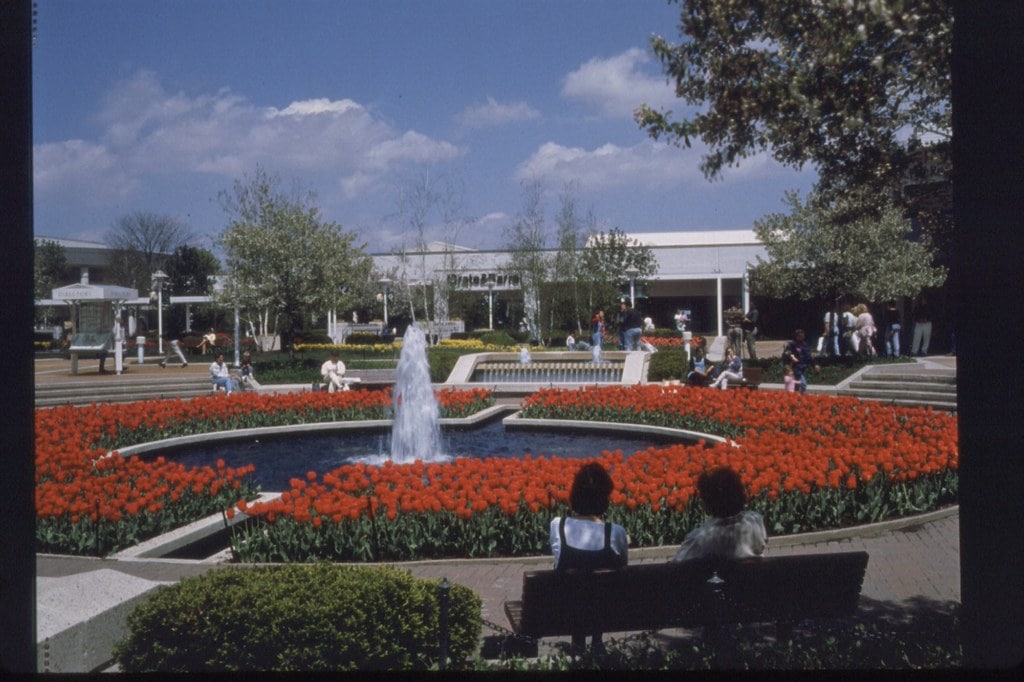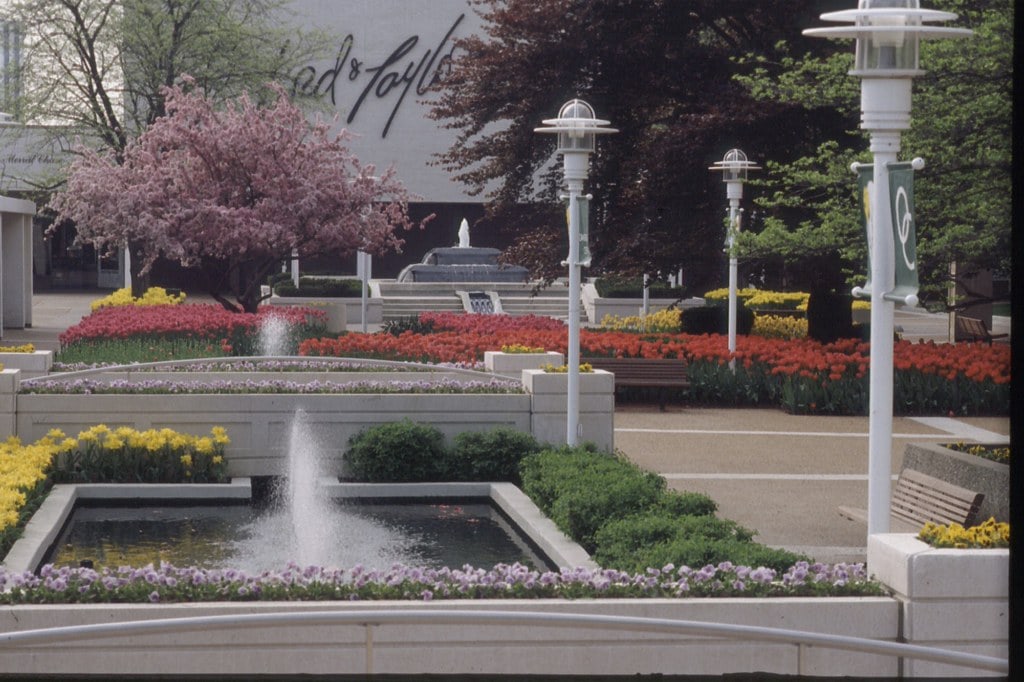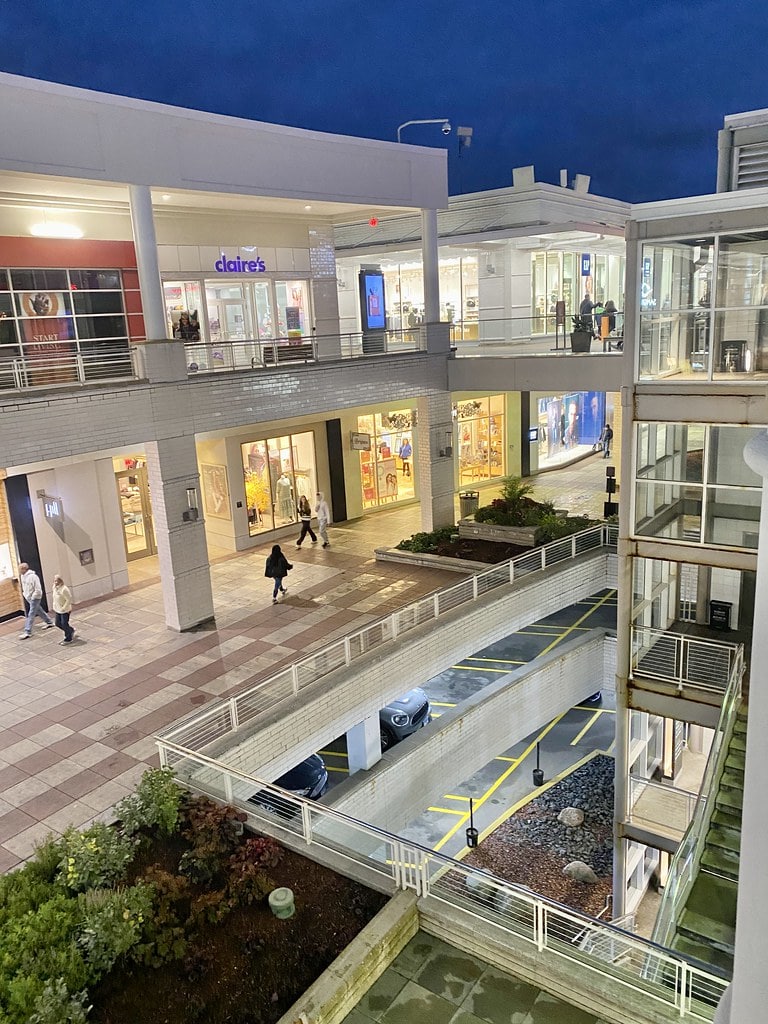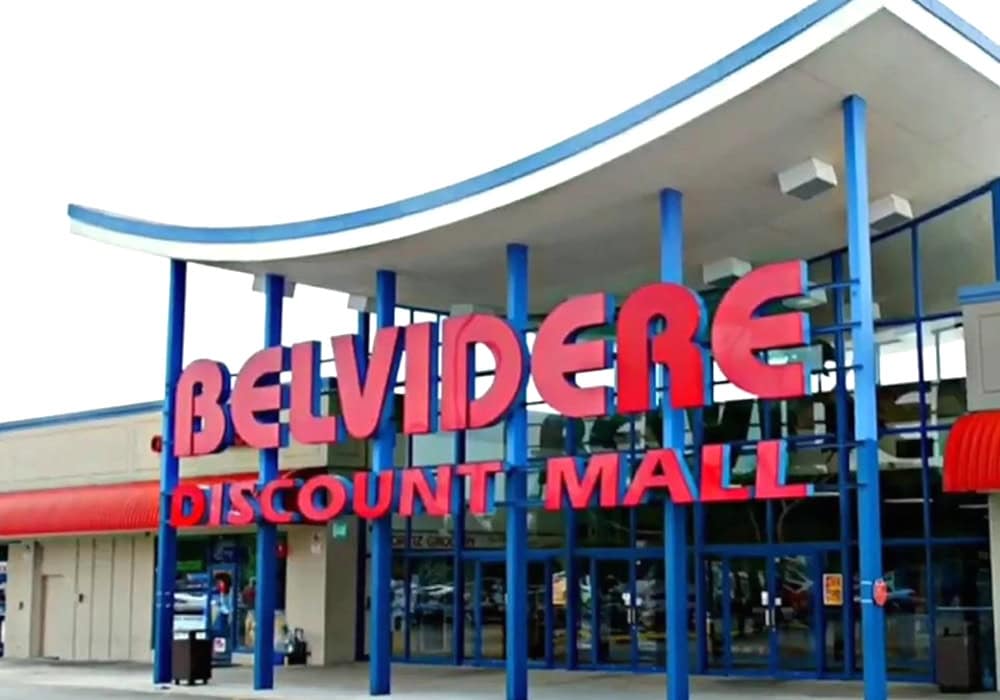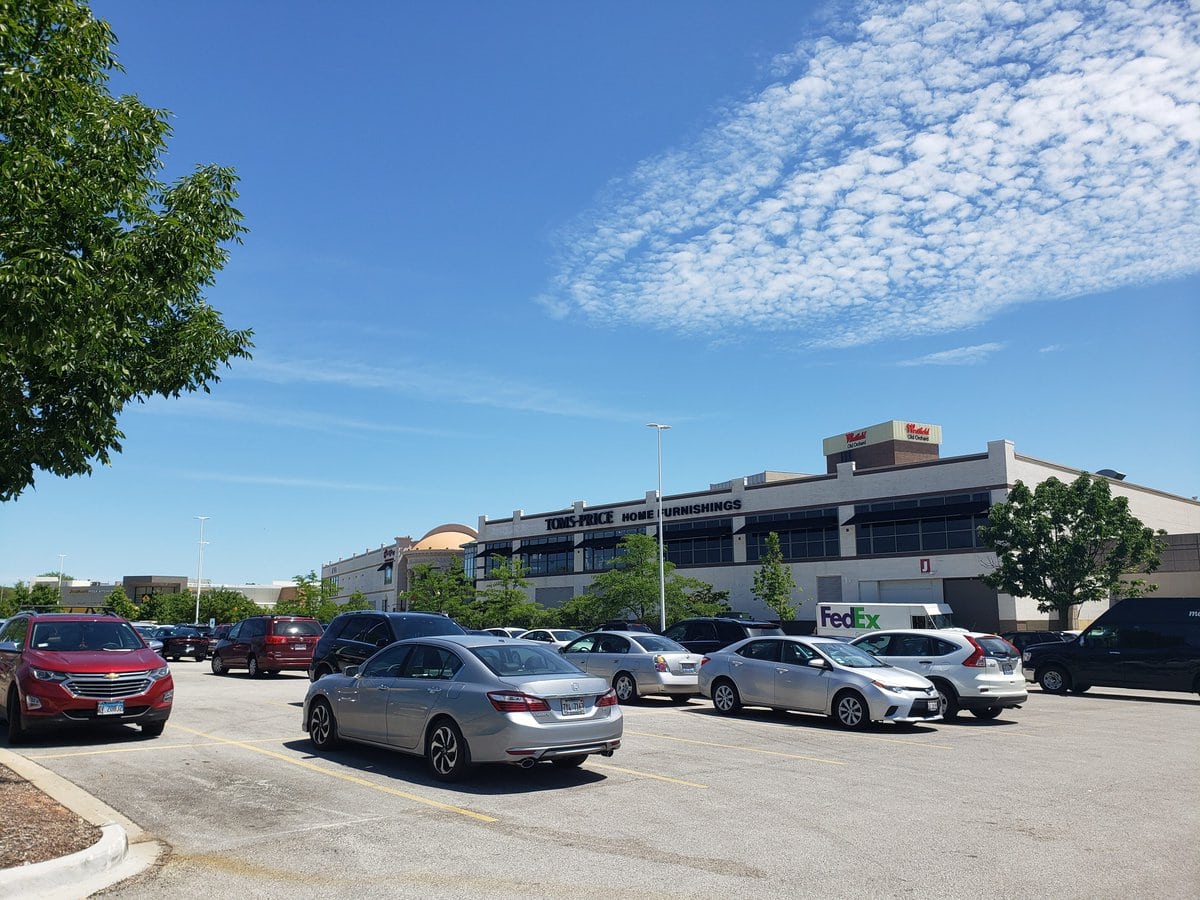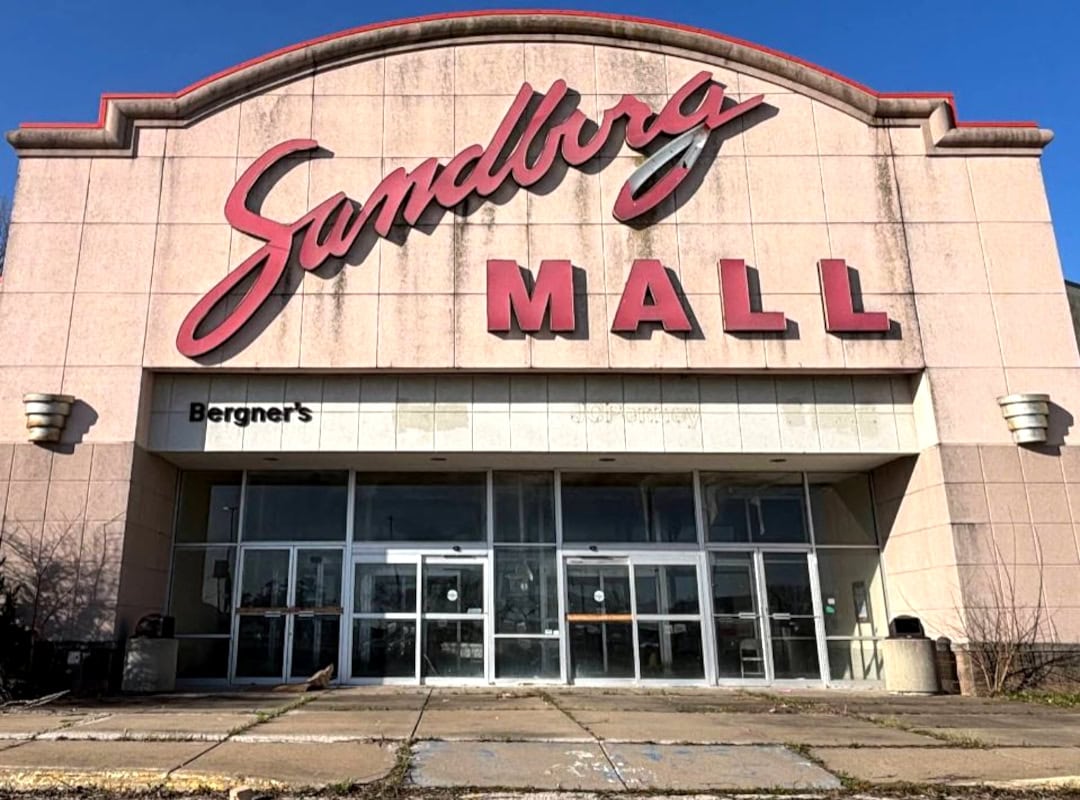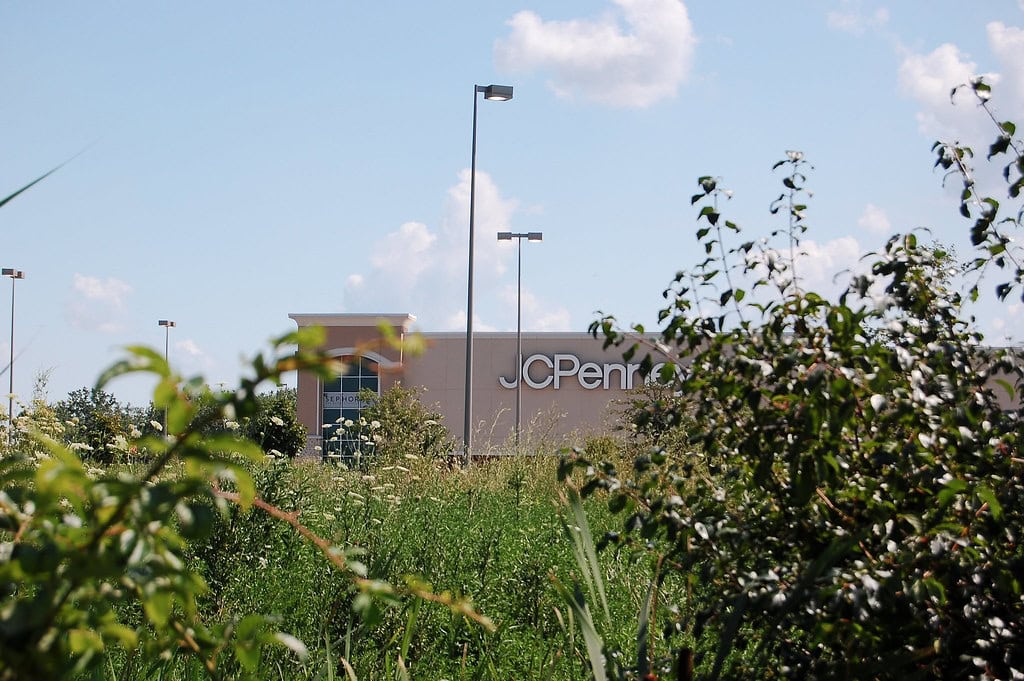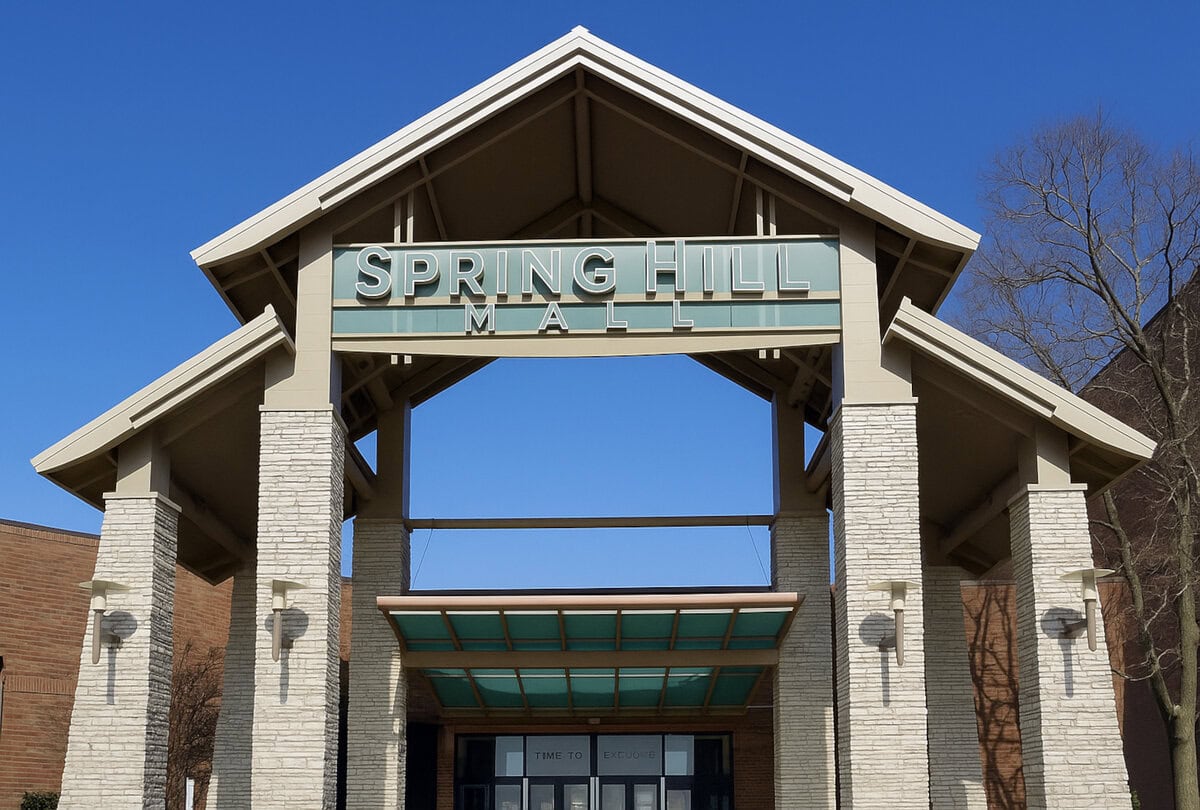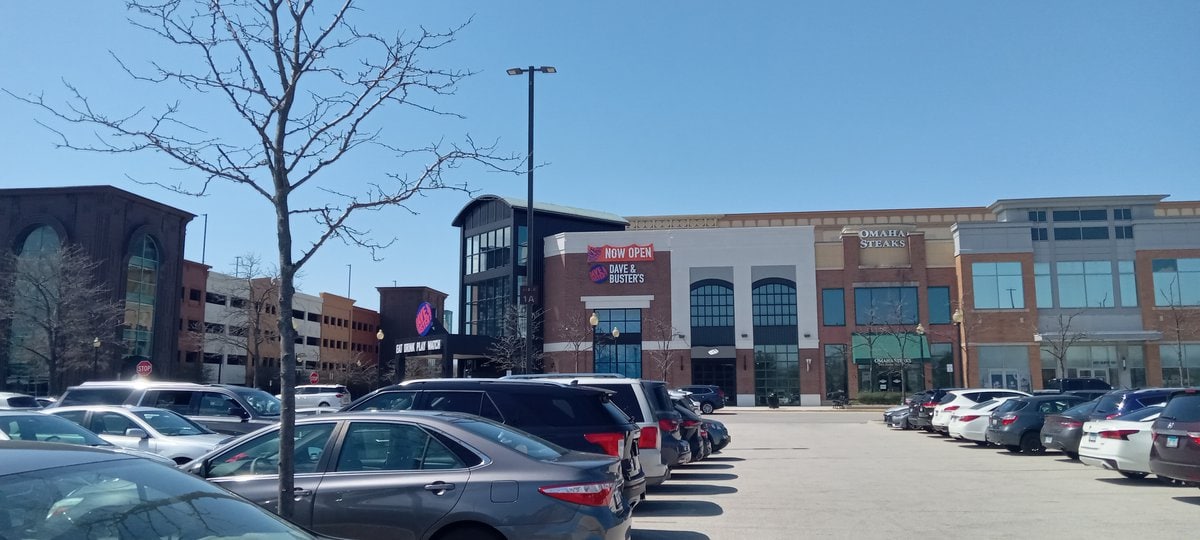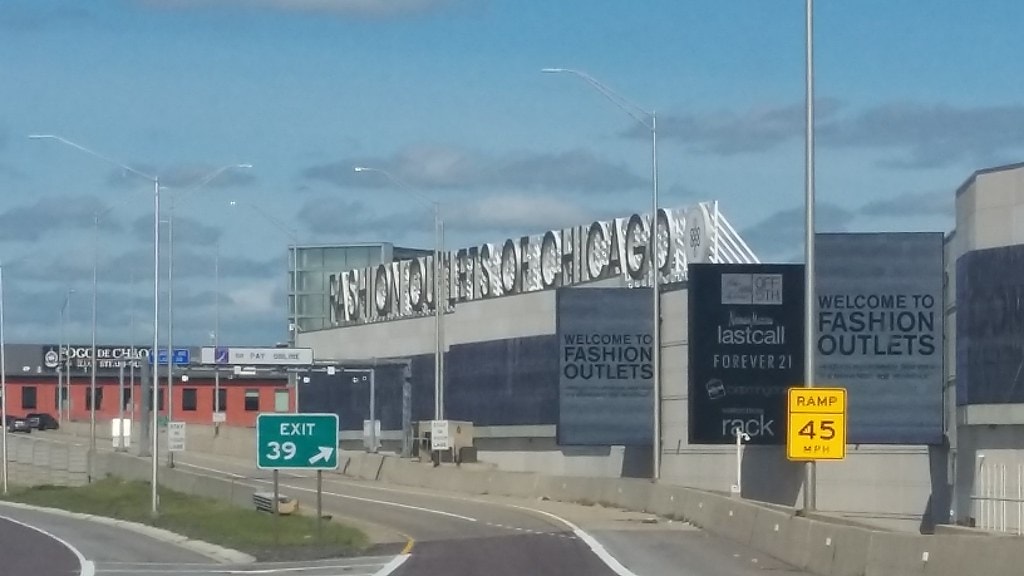Oakbrook Center is an open-air shopping mall in Oak Brook, Illinois, located near Route 83 and Interstate 88.
It opened in 1962 with Sears, Marshall Field's, and a Jewel Food Store, offering a plaza-style layout at a time when enclosed malls were becoming common.
Built by developer Philip M. Klutznick, it was designed with brick paths, landscaped courtyards, and exterior-facing storefronts.
Over time, Oakbrook Center expanded its footprint, added luxury anchors like Neiman Marcus and Nordstrom, and integrated restaurants and entertainment.
As retail shifted, major anchors closed and their spaces were reconfigured into smaller stores or specialty chains.
By the 2020s, the layout remained largely intact, but traditional department store dominance had faded.
Restoration Hardware built a three-story gallery with a rooftop restaurant.
AMC Theatres opened a 12-screen cinema. Sears and Lord & Taylor had closed, but Macy's remained.
Built for a New Suburb (1962-1972)
Oakbrook Center opened in 1962 with Sears, Marshall Field's, and a Jewel Food Store.
The open-air design set it apart. Instead of long corridors and roofed hallways, shoppers walked along brick paths between stores.
Parking was built around the perimeter. People could move easily from the lot to the walkway without escalators or elevators.
The developer, Philip M. Klutznick, kept the layout flat and open, with landscaping woven between storefronts.
The name "Oakbrook Terrace" was originally planned for the mall, but a nearby town claimed it first.
By the early 1970s, Oakbrook Center had already grown beyond its first build.
Lord & Taylor opened in 1973. The store stood alone but fit into the plaza format, where each major anchor had clear exterior visibility.
Unlike enclosed malls that emerged across Illinois, Oakbrook kept to its original style.
Customers who came in the afternoon often stayed past dinner.
The mall became part of the suburban routine, especially for families who lived nearby or worked in surrounding offices.
Parking lots stayed busy into the evening, even in winter.
A Bigger Footprint (1973-1986)
Between 1981 and 1982, Oakbrook Center expanded to double its previous footprint nearly.
A new court brought in Saks Fifth Avenue, I. Magnin, and Neiman Marcus.
The additions carried a luxury profile that hadn't been part of the original anchor lineup.
Stores opened into the new court but stayed connected to the rest of the center by open-air walkways and shared paving.
The format stayed consistent even as the range of brands changed.
At the end of 1987, the existing movie theater was split from a single screen into four.
It had opened back in 1964 under the Balaban & Katz name. Cineplex Odeon took over and added another set of four screens near the same wing.
Above the new theaters, the mall added more retail, including a bookstore.
That upper section kept the same open feel but added enclosed storefronts for quieter tenants.
Changing Tenants, Changing Times (1987-2003)
Bonwit Teller closed in 1990. The building sat unused until its space was split for other tenants. I. Magnin closed in 1991.
Three years later, the shell of that store reopened as a split-level group of specialty chains, Eddie Bauer and Tiffany & Company among them.
Nordstrom opened on April 5, 1991. Its two-story build sat on top of a parking garage and added over 200,000 square feet to the mall.
The same year, Maggiano's Little Italy opened nearby. Oakbrook Center kept its open-air layout but filled in more corners with permanent structures.
Corner Bakery Café opened on December 3, 1992. Wildfire followed in 1998.
Both operated with exterior-facing entrances and added restaurant square footage to sections once dominated by retail.
In 2001, the upper level of the Cineplex Odeon buildout, which had included a bookstore, closed.
That space would remain dark until later redevelopments.
In 2002, Saks Fifth Avenue shut down. Federated Department Stores picked up the property and rebuilt it into a three-story Bloomingdale's Home.
That opened in September 2003.
By then, Oakbrook Center had started to look layered: high-end, mid-range, restaurant, and retail, all sharing space across different builds and elevations.
Rebranding the Familiar (2004-2014)
In August 2004, Cheesecake Factory opened. On September 8, 2006, Marshall Field's became Macy's.
The change was part of a national rebrand after Macy's bought the parent company.
Signs came down and went back up in the same places. Inside, sections were re-merchandised, but the escalators and flooring stayed the same.
In 2008, Barnes & Noble opened. American Apparel came in 2009. It would close in 2017.
In 2010, Gibson's Bar and Steakhouse opened across the street, still within the property footprint.
Pandora opened in 2011. Pinstripes followed in 2012, built in the parking lot.
Its lanes and bocce courts stood separate from the indoor tenants. In 2013, Perry's Steakhouse took over the lower level beneath Neiman Marcus.
That floor had previously been underused.
Bloomingdale's Home closed in 2012. Its footprint was converted two years later into six smaller tenants.
The Container Store filled the ground level. Upstairs held Lululemon Athletica, Tommy Bahama, Hugo Boss, and Aritzia.
The renovation shifted away from large-format retail, instead relying on flexible leases.
In 2014, Le Méridien opened a 172-room hotel. The building had been a Renaissance Hotel before that, and a Stouffer before that.
The rooms looked out onto parking structures and mall roofs.
Holding Ground in a Shifting Market (2015-2021)
On October 13, 2016, AMC Theatres opened a new 12-screen cinema in a remodeled section of the Nordstrom wing.
The project reused existing space but added interior upgrades and a new food court called The District.
That part of the center became more enclosed, with patterned flooring and mounted signage different from the original brick and concrete finishes.
The entrance remained accessible from the outside, but the movie wing encouraged longer indoor visits.
In June 2017, Sears announced its Oakbrook location would be reconstructed. It closed later that year.
A smaller-format Sears opened on October 5, 2018, built into the first level of the mall.
Above and around it, the old footprint was broken up. Ballard Designs and L.L. Bean arrived that fall.
Spaces once occupied by single retailers now held multiple brands with smaller floor plans.
In 2018, Lord & Taylor confirmed it would close.
On November 3, 2021, Puttshack opened as a standalone venue, offering mini-golf with dining service.
Restoration Hardware followed that same year with a three-story store built into the footprint of the former Macy's Men's.
The top floor included a restaurant and a glassed-in wine bar.
Caught Between Past and Future (2021-2025)
Life Time opened at Oakbrook Center in 2021 as a three-story, 198,000-square-foot athletic resort located at the north end of the mall.
The facility includes a rooftop pool deck, indoor and outdoor aquatics, fitness studios, strength and cardio equipment, full-size basketball courts, and dedicated areas for kids' programming.
Additional features include a spa, café, and lounge space.
The building operates as a standalone venue but remains part of the mall's broader tenant mix.
On December 23, 2021, an exchange of gunfire took place inside the mall.
According to police reports, two individuals were involved. One was struck four times.
Three bystanders were also injured. The mall closed temporarily but reopened the next day.
After the lockdown period ended, Oakbrook Center added several new tenants. Joss & Main was among the confirmed openings by 2023.
Wonderverse opened at Oakbrook Center on January 11, 2024, following a preview held the previous December.
Developed by Sony Pictures Entertainment, the venue occupies a repurposed mall space and operates as an indoor entertainment center focused on film-based attractions.
The facility features interactive installations tied to franchises such as Jumanji, Zombieland, and Ghostbusters.
Visitors move through a mix of virtual reality games, motion simulators, and projection-based sets.
A bumper car ride and several themed bar areas are part of the layout. Scheduled time blocks divide family-friendly hours from adult-only sessions.
The attraction marks another example of mall space being converted for entertainment over traditional retail.
Oakbrook Center never flipped formats the way others did. It didn't get capped with a roof.
It didn't go dark. It didn't shift to housing, logistics, or clearance outlets.
What changed was slower but constant: anchor spaces split and resold, restaurant leases outlasted retail, and national chains rotated through spaces built for someone else.
The footprint remained unchanged, but fewer stores maintained their presence for more than a few years.
Some returned under new names. Others left without replacements.
What had been a department store mall now operates on temporary leases, offers dining options, and hosts weekend events.
It didn't fail. It didn't reset. It just keeps going, a little emptier, a little newer, a little less certain what would last.

